Aronian and Carlsen share first place
 Also known as the “Wimbledon of chess”, the Wijk aan Zee tournament has been a constant feature in the chess calendar for over eighty years. The 2021 edition will be extra special, as the event will be held amid the second wave of a pandemic that saw almost every single over-the-board tournament cancelled in 2020. A youthful 14-player field — 34-year-old Pentala Harikrishna is the oldest participant — will play a single round robin tournament starting Saturday.
Also known as the “Wimbledon of chess”, the Wijk aan Zee tournament has been a constant feature in the chess calendar for over eighty years. The 2021 edition will be extra special, as the event will be held amid the second wave of a pandemic that saw almost every single over-the-board tournament cancelled in 2020. A youthful 14-player field — 34-year-old Pentala Harikrishna is the oldest participant — will play a single round robin tournament starting Saturday.
World champion Magnus Carlsen will head the field. The Norwegian holds the record for most wins in the tournament, having won the event a whopping seven times — his latest victory was achieved in 2019. Carlsen has skipped playing in Wijk only once since 2004, when he made a stunning debut in the “C group”, winning the tournament with a 10½/13 score while he was still an International Master.
Carlsen played in the “B group” the next two years, finishing seventh in 2005 and second (on tiebreaks) in 2006. The Norwegian went on to make his debut in the main event in 2007, when he had a disappointing performance, sharing last place after losing four games and winning none for a 4½/13 score.
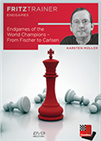 Let endgame expert Dr Karsten Müller show and explain the finesses of the world champions. Although they had different styles each and every one of them played the endgame exceptionally well, so take the opportunity to enjoy and learn from some of the best endgames in the history of chess.
Let endgame expert Dr Karsten Müller show and explain the finesses of the world champions. Although they had different styles each and every one of them played the endgame exceptionally well, so take the opportunity to enjoy and learn from some of the best endgames in the history of chess.In 2008, however, he immediately recovered from his previous setback by sharing first place with Levon Aronian. Carlsen won five games and lost two to tie for first on 8 points. At that point in time, he was ranked 13th in the world, and prevailed against a field that included eight players from the world’s Top 10.
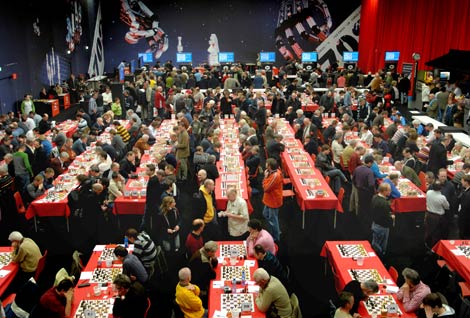
The playing hall
Two events shocked the chess world while the tournament took place between the 12th and the 27th of January. On the 17th, when the fifth round was played (Carlsen drew Vassily Ivanchuk with black), Bobby Fischer passed away in Reykjavík; while on the 20th, in the “B group”, Ivan Cheparinov twice refused to shake Nigel Short’s hand before the start of their game and was forfeited, as a FIDE rule had been issued shortly before the incident prescribing the penalty for this specific situation.
Losses against Anand and Leko
Carlsen’s losses came rather late in the tournament. First, he was defeated by Peter Leko in round 9. After having defended a tough position for quite a while, the 17-year-old Norwegian cracked under the pressure in an imbalanced endgame.
Two rounds later, he lost with white against a 2799-rated Vishy Anand (the Indian had the exact same rating as Vladimir Kramnik atop the world ranking). Carlsen went for a massive kingside attack against the Sicilian, but saw his opponent calmly defending until getting the win. This was the position after 29 moves:
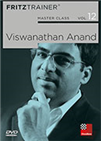 This DVD allows you to learn from the example of one of the best players in the history of chess and from the explanations of the authors how to successfully organise your games strategically, and how to keep your opponent permanently under pressure.
This DVD allows you to learn from the example of one of the best players in the history of chess and from the explanations of the authors how to successfully organise your games strategically, and how to keep your opponent permanently under pressure.
30.Bxh5 gxf5 31.Bxf7+ Kxf7 and White is now two pieces down.
The onslaught continued with 32.g6+ Kg8 33.Qh7+ Kf8 34.Rxf5+ Ke7 35.Qxg7+ Kd6 36.Rf7
Black now had a move to breathe — 36...Qxd5+ 37.Kg1 Rbd8. White tripled on the seventh with 38.Rh7, but it was not enough. Carlsen resigned four moves later.
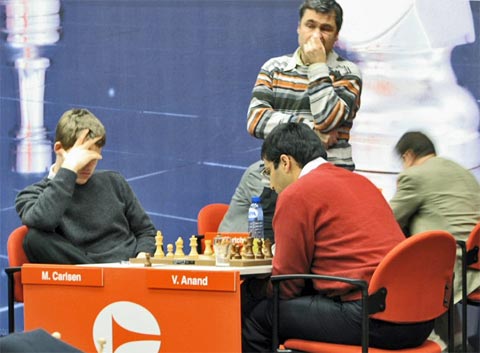
Magnus Carlsen facing Vishy Anand with Vasyl Ivanchuk in the background
Select an entry from the list to switch between games
Five wins
Carlsen kicked off the event with two consecutive wins, beating Shakhriyar Mamedyarov with black and Pavel Eljanov with white. Three draws followed, and then he got the better of Judit Polgar in round 6. Two more draws gave him the sole lead before his loss against Leko. His youthful ambition, however, allowed him to bounce back immediately, as he defeated Loek van Wely from the black side of a wild Benoni:
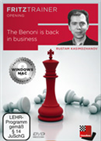 On top level the Benoni is a rare guest but with this DVD Rustam Kasimdzhanov this might change. New ways and approaches in most lines and countless improvements of official theory will show you how to play this opening at any level with success.
On top level the Benoni is a rare guest but with this DVD Rustam Kasimdzhanov this might change. New ways and approaches in most lines and countless improvements of official theory will show you how to play this opening at any level with success.
Things had clearly gone wrong for black, as he was at this point in a dire situation two exchanges and two pawns down. But, as Mihail Marin put it in his analysis for ChessBase, “Van Wely became confused when being faced on each step with the uncomfortable task of... choosing between several winning moves!”.
Marin:
39.Qe3?! This move, probably dictated by the natural desire to keep the own king defended, throws away the biggest part of the advantage.
From a practical point of view, 39.Rh8+! would have been the simplest way to a win, because it would have led to the forced exchange of queens and the unstoppable advance of the far advanced passed pawns.
In the heat of the fight and under time pressure it is not easy to spot the other winning move, 39.Qe7, creating the unpleasant threat of Qh4+.
The game continued 39...Qxd5+ 40.Kg3 (40.Kg1 was the way to go), when Black is completely back in the fight.
Shocked by the opportunities he had missed, however, Van Wely blundered the game away after 40...Nc4:
41.Qf2 allowed 41...Qd3+ 42.Kg2 Be4+ 43.Rxe4 Qxe4+ and Black’s queen, knight, dark-squared bishop and g-pawn created a devastating attack, with White’s rook and bishop completely out of play.
 This DVD allows you to learn from the example of one of the best players in the history of chess and from the explanations of the authors (Pelletier, Marin, Müller and Reeh) how to successfully organise your games strategically, consequently how to keep y
This DVD allows you to learn from the example of one of the best players in the history of chess and from the explanations of the authors (Pelletier, Marin, Müller and Reeh) how to successfully organise your games strategically, consequently how to keep yAfter losing to Anand the next round, Carlsen played a fourth consecutive decisive game in the penultimate round, when he played a Hedgehog to defeat Vladimir Kramnik.
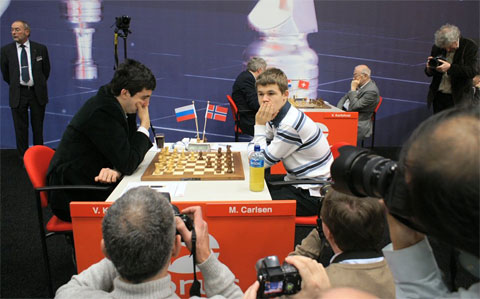
Magnus Carlsen beat Vladimir Kramnik in round 12
“The kid”, as Garry Kasparov called him at the time, went into the final round sharing the lead with Levon Aronian. Both he and Aronian drew their games with white and were declared joint winners. Anand and Teimour Radjabov finished a half point behind.
Select an entry from the list to switch between games
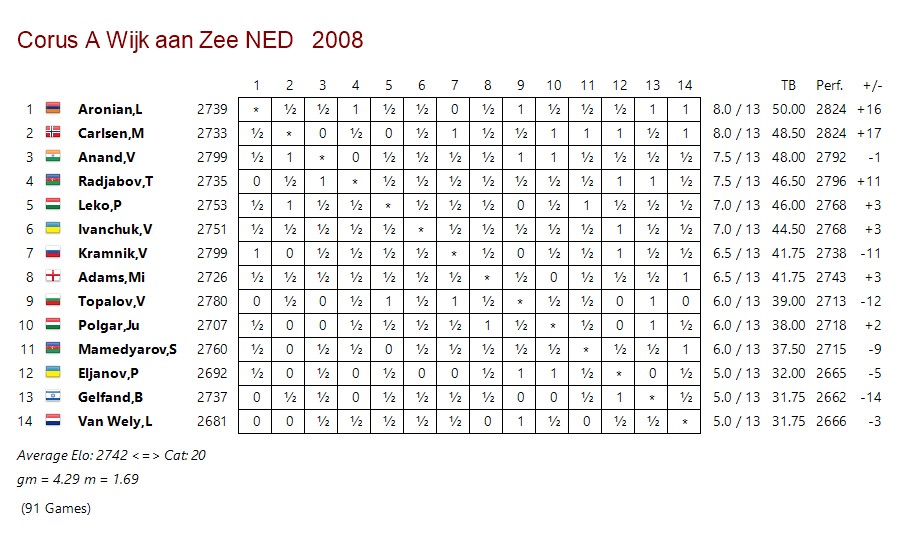
All games - Corus A 2008
Links
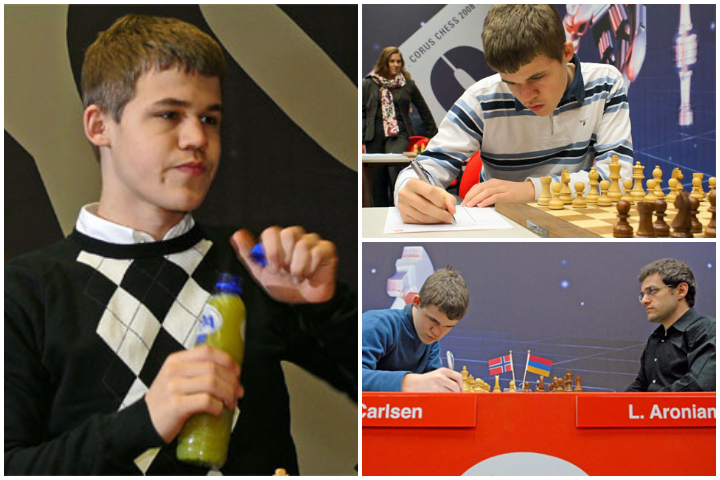

















 Also known as the “Wimbledon of chess”, the Wijk aan Zee tournament has been a constant feature in the chess calendar for over eighty years. The 2021 edition will be extra special, as the event will be held amid the second wave of a pandemic that saw almost every single over-the-board tournament cancelled in 2020. A
Also known as the “Wimbledon of chess”, the Wijk aan Zee tournament has been a constant feature in the chess calendar for over eighty years. The 2021 edition will be extra special, as the event will be held amid the second wave of a pandemic that saw almost every single over-the-board tournament cancelled in 2020. A 








